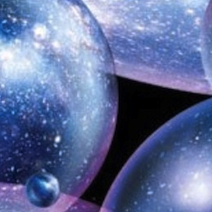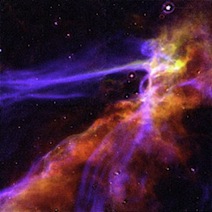Our Universe is big, really big… And it might not be the only one. Various theories predict the existence of other “bubble universes”, and some of them should occasionally collide. These collisions could be the key to confirming the existence of the multiverse.
Theoretically, the collision of two bubble universes produces peculiar features in the cosmic microwave background (CMB). Previous attempts to identify the “signature” of such collisions were not successful, as the features found could be reproduced by other sources. A team of researchers has now predicted for the first time the detailed three-dimensional shape and CMB temperature and polarization signals produced by a bubble collision in the early Universe.
According to Matthew Kleban from New York University, USA, Thomas S. Levi and Kris Sigurdson from University of British Columbia, Canada, a bubble collision produces a “cosmic wake”: when another universe collides with ours, a special wave is produced and propagates into our bubble and affects the spacetime region to the causal future of the collision.

They determined that temperature and polarization signals in the CMB caused by collisions both have a circular symmetry. The polarization pattern exhibits a striking feature: there is a double peak in the magnitude of the polarization as a function of angle. According to the researchers, this pattern serves as a true smoking gun for the detection of cosmic bubble collisions. Then, the researchers determined the degree of detectability of the polarization signal for a selection of current and future experiments, such as Planck or CMBPol.
They observed that the bigger the spot is, the easier it is to detect with polarization, but the harder it is using temperature. Finally, the scientists add that future work will consist in quantifying the effect of cosmic wakes on large scale structures. Maybe future experiments will reveal strange patterns, the problem will then be to make sure that they are indeed patterns and not just something random…
Are there other universes out there? Who knows.
Reference
Matthew Kleban, Thomas S. Levi, Kris Sigurdson. Observing the Multiverse with cosmic wakes: arXiv:1109.3473v1

